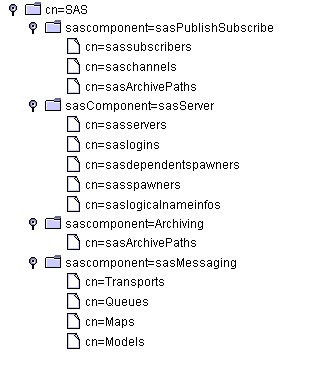SAS 9.1.3 Integration Technologies » Developer's Guide
|
Directory Services
Directory Services and Integration TechnologiesThe SAS implementation of directory services is based on LDAP Version 2. Integration Technologies versions 8.2 and 9 include support for UTF-8 character encoding which means that you can use either an LDAP Version 2 or LDAP Version 3 server. Integration Technologies software includes several facilities that can be used to add, modify, delete, and search entries in an LDAP server: The LDAP CALL Routine Interface and the LDAP SCL Interface are application facilities that enable you to utilize an enterprise directory server from within a SAS application environment. The Integration Technologies Administrator is a Java application that is used to manage the LDAP directory entries for objects that are used by components within the SAS Integration Technologies product. All of these facilities interact with a directory server using either LDAP Version 2 or Version 3. SAS Integration Technologies supports the following directory servers that have been tested for use with the product:
Active Directory is Microsoft’s implementation of directory services that runs on Windows 2000 Server platforms. While more than a generic LDAP server, it does support an LDAP interface through the Active Directory Service Interface (ADSI). While commercial enterprise directory servers are currently recommended, SAS Institute acknowledges the LDAP open-source initiative and will make executables of the openLDAP slapd server generally available across a variety of platforms. If your site has not yet implemented an LDAP-enabled directory, contact your SAS account representative for deployment options. SAS Application LDAP StructureSAS application data begins at a sasContainer object with a relative distinguished name of cn=SAS, as shown in the following image. The user must provide the location of the relative distinguished name during the installation of the directory services portion of SAS Integration Technologies.
Below the cn=SAS container are containers for each SAS component that uses information from the LDAP directory. The following list provides a brief description of each container that is used in the SAS application sub tree.
Below the SAS component containers are containers for the entry types that are used by those components. For example, the cn=transports container holds entries that contain information about an available message queueing transport. |
